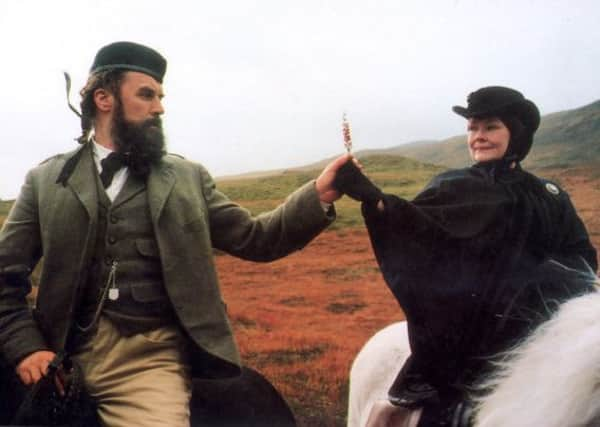Biography has measure of Queen Victoria and Brown


The biography of Britain’s longest-serving monarch views the couple’s strange relationship through the bottom of a whisky bottle and argues that it was the pair’s frequent imbibing that contributed to persistent rumours of a sexual affair between the widowed Queen and her most devoted servant.
The relationship between Queen Victoria and her Highland servant John Brown has fascinated historians for more than a century and became the subject of an Oscar-winning movie, Mrs Brown, starring Dame Judi Dench as Queen Victoria and Billy Connolly as Brown.
Advertisement
Hide AdThe author of a new book, Victoria, which will be published next week, argues the Queen began to behave more irrationally and that her handwriting became increasing illegible as a consequence of drinking more frequently.
AN Wilson, who is filming a new BBC documentary about Victoria, explains: “Brown took a similarly protective attitude towards his queen and his own dependence upon alcohol would lead him to apply similar counsel to her in her troubles. ‘Don’t stay thirsty’. It is an essential part of the story. Without recognising the presence of the whisky bottle, there is much about the behaviour of both Brown and Victoria which is difficult to fathom.” Brown, who was born in Crathie in Aberdeenshire, met Queen Victoria and her husband, Prince Albert, in 1848 when the couple first leased Balmoral Castle as a Highland retreat and where he worked as a ghillie.
The queen bought the estate two years later and the couple and their children spent many happy summers at Balmoral, but it was after the sudden death of her husband in 1861 that she began to rely more heavily on Brown who became her closest servant.
Everyone else lived in fear of the queen and Brown was the only person who treated her like a normal person. He once upbraided her for demoting a footman to the kitchen after he accidentally dropped a tray in her bedroom. Brown asked if she had never dropped anything in her life? The footman was reinstated to his post.
Wilson explains: “Her nature was a mixture of tenderness and shrillness; with Brown, as whisky was imbibed (and whisky does increase hot-temperedness and lack of charity), she came to catch some of his abrasive spirit.
“His violent Presbyterianism helped fuel her own prejudice against bishops. ‘I’m sure the dear bishop will go straight to heaven when he dies,’ she remarked of a missionary, John Coleridge Patterson, first bishop of Melanesia. ‘Weel, God help him when he meets John Knox,’ was Brown’s answer.” When Queen Victoria brought Brown to serve by her side in London rumours began to circulate that their relationship was more than just one between monarch and dutiful servant. The poet and writer Wilfred Scawen Blunt wrote in a letter: “It was the talk of all the household that he was ‘the queen’s stallion’... He was a fine man physically, though coarsely made, and had fine eyes (like the late prince consort’s, it was said) and the queen, who had been passionately in love with her husband, got it into her head that somehow the prince’s spirit had passed into Brown, and four years after her widowhood, being very unhappy, allowed him all privileges... [There could be] no doubt of his being allowed every conjugal privilege.”
Advertisement
Hide AdHowever, Wilson believes there is a lack of firm evidence to suggest a romantic affair.
He said: “I have to confess to the rather unsatisfactory answer that I still feel unable to make up my mind.
Advertisement
Hide Ad“My instinct is to believe that it was what it appears to be in her letters: namely an embarrassingly close monarch-and-servant relationship. Brown meant it when he said he would die for her, and the Queen meant it when she called him her ‘treuer’ Brown.
“I would point out the impossibility of carnal relations between them in the early years of her widowhood, when she was plainly fixated on the memory of Albert, and he was plainly no more than her Highland servant. Nothing can be proved about the later period.”